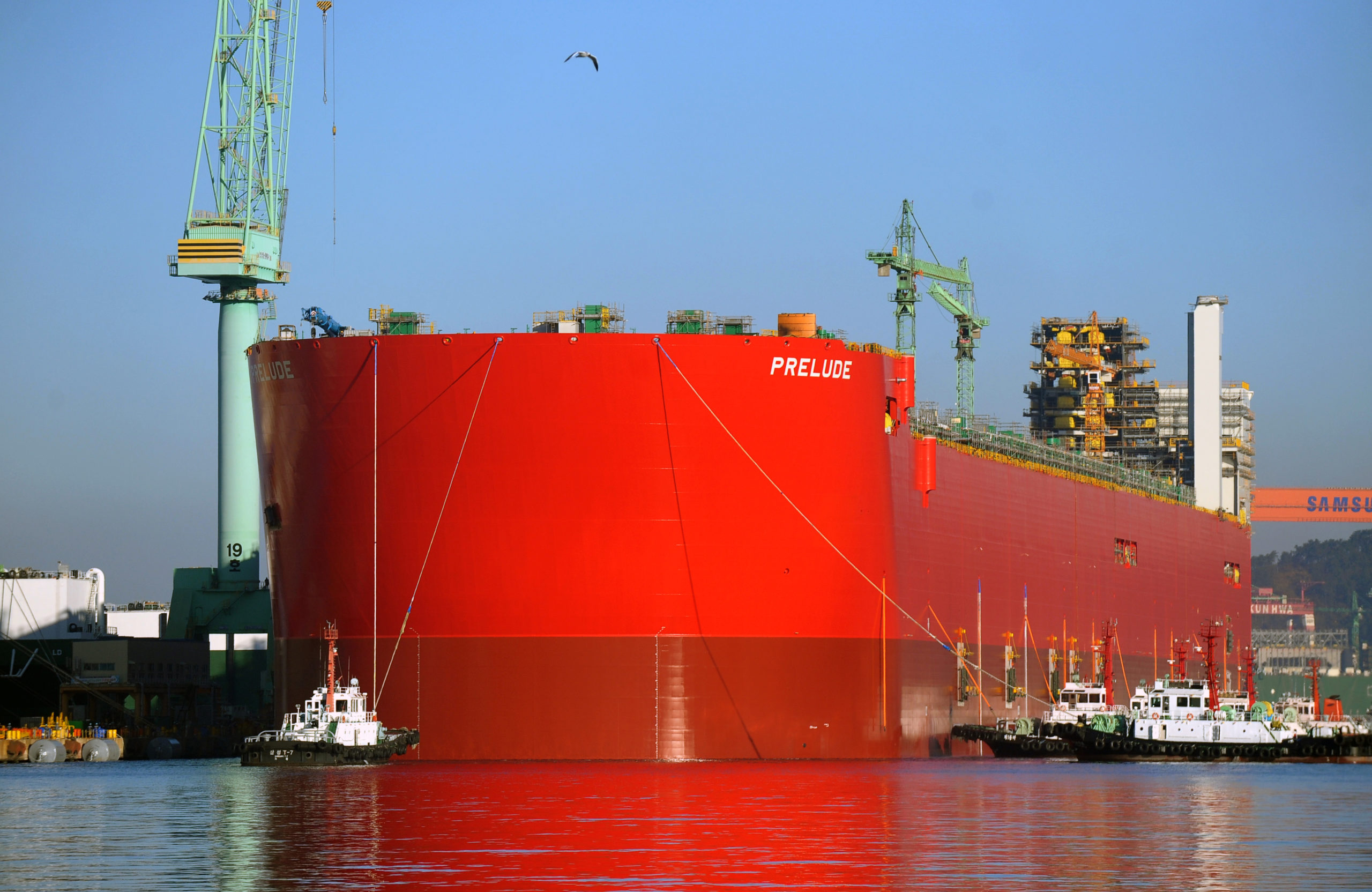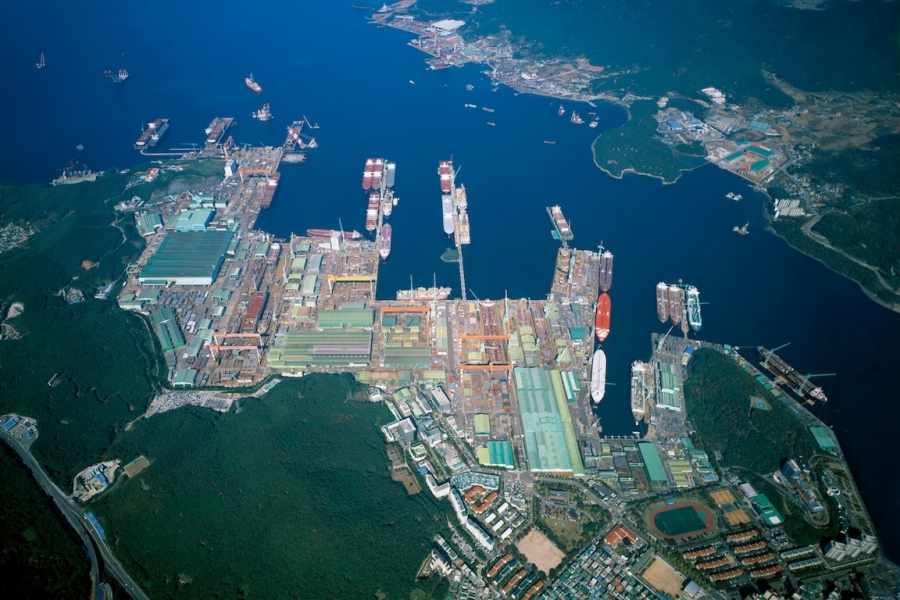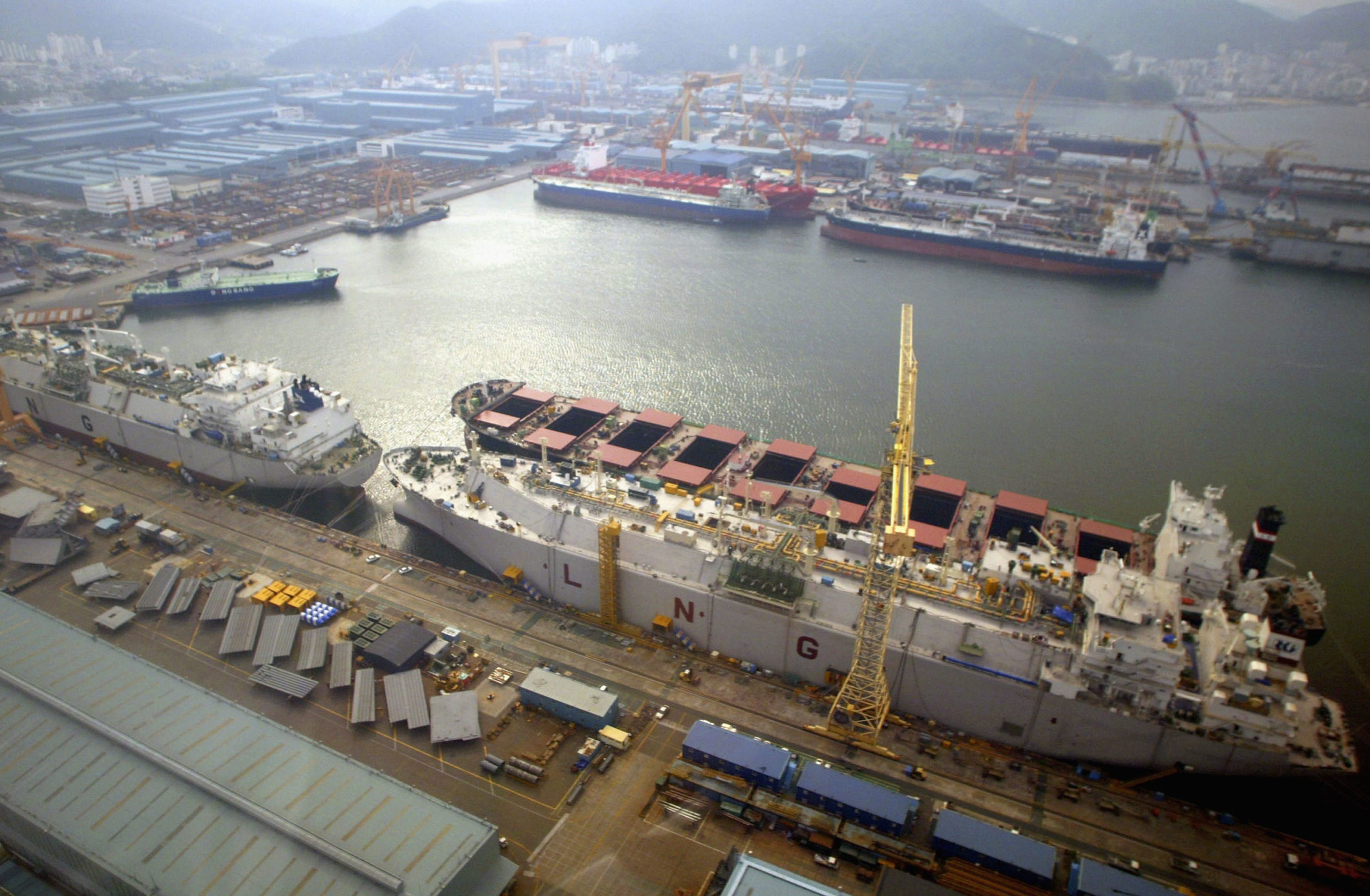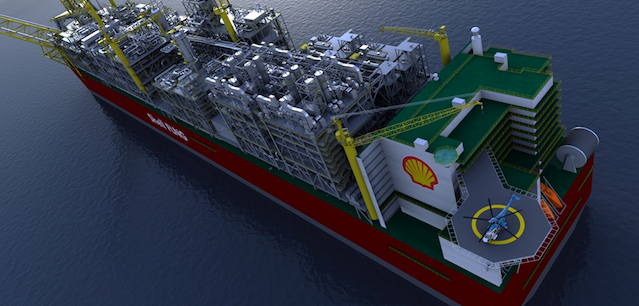The world’s ever-growing demand for gas is driving companies deeper and further into the ocean to drill for it. And, to do so, they’re building a new type of ship: small city-sized floating factories that drill, process, refine and barrel gas while still out on the open sea. Think of them as one-stop gas shops that, crucially, can operate in international waters.
In December, Gizmodo wrote about the first of this new breed of ship: The Prelude, a town-sized gas processing plant that just happens to float (it can claim the title of the largest floating object ever built, in fact).
To me, the Prelude seemed liked an aberration.
But as the Wall Street Journal reports, there are 30 more of these colossal ships, known as “floating liquefied natural-gas vessels” or FLNGs, getting underway elsewhere in the world, each costing upwards of $US10 billion. So the Prelude isn’t an anomaly — it’s just the vanguard of a new generation of ships.

AP Photo/Shell International.
Finding the space to actually build these behemoths is almost more of a challenge than the construction itself. The Prelude won’t sail until 2016, though it’s already in the water at Samsung’s shipyard in Korea, which is one of the largest in the world (it also boasts the highest amount of automatic robotic work of any other shipyard).
But in Australia, the construction of another floating factory — the Browse LNG — will require the blasting of a huge chunk of reef and seabed, resulting in 19 square miles of “marine deadzone” according to environmental groups.

Samsung’s Geoje Island shipyard in Korea, where Shell’s Prelude is being built.
Let’s back up for a second here: What’s driving this ship building boom? Normally, gas is siphoned from undersea deposits by semi-permanent stations, then pushed through pipes to shore, where it’s refined and actually shipped out to customers. That’s becoming too expensive for a number of reasons. First of all, gas discoveries are becoming smaller and further in between, so it makes a lot more sense to have a mobile refinery that can move around to new deposits. Second, the demand for gas is growing, thanks in large part to Asia’s boom.
The third reason is more ominous. It’s cheaper to build refineries on the ocean because gas companies don’t have to pay for real estate, abide by national labour laws, or even environmental codes. By operating in international waters, it’s almost like these corporations are taking a book from modern-day pirates. It’s a wonder they didn’t think of it sooner.

An LNG underway at Geoje Island shipyard. Getty/Chung Sung-Jun.
Which brings us to the point: That since no LNGs exist yet, it’s hard to tell how regulated they will be. Shell says its Prelude can withstand Category 5 cyclones — but what about earthquakes (or tsunamis) during drilling? Or even just age: Most LNGs seem to be rated for 50 years of life. What happens then? The next generation will have to figure it out. [Wall Street Journal]
